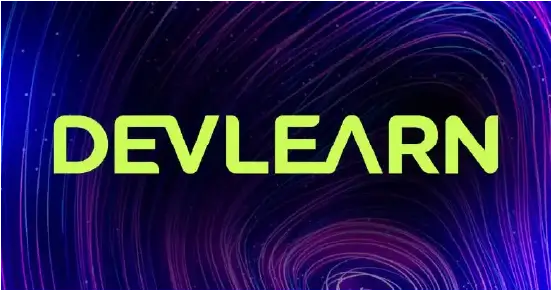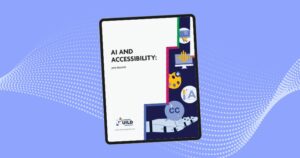When our programming team was reviewing session submissions for the fall Learning Guild events, DevLearn 2024 Conference & Expo and the Learning 2024 Conference, we joked about the overuse of specific words as a hallmark of AI-written text.
We weren’t wrong. And it’s not only a case of excessive “delving” into, well, any- and everything.
Shades of gray
AI’s LLMs—large language models—are changing the way we write, not only the words we use. And addressing the problem is not as simple as determining whether something was written by AI or a human. There are gray areas: Human writers might use AI tools to draft text, which they then revise to reflect their own voice. Or, they may create a draft and use AI to refine it. Others rely on tools like Grammarly for proofreading assistance.
Signs to watch for
Clues that something was written by an LLM include both the absence of typos (a benefit) and the likelihood of implausible or downright false statements (decidedly not a benefit).
AI tools offering editing assistance might suggest the use of words that aren’t quite right or miss a writer’s eggcorn (misuse of a word that sounds similar to but is a different word with a different spelling, e.g., describing “flushing out” a description rather than fleshing it out, or serving a “hardy” meal rather than a hearty one). Grammarly, a tool my office uses, has noticeable issues with grammar, often missing—or suggesting—language with subject-verb disagreement or misplaced commas, among many examples.
These challenges mean that unquestioning acceptance of your LLM or AI-based assistant’s suggestions would be risky. The issues are likely due to AI’s reliance on “training text” pulled from the internet, which includes samples of excellent writing as well as many, many examples of poor or incoherent writing. All of the problematic language is easily correctable—if a competent, skilled editor reviews content before it’s deployed as part of your training library.
But there’s a bigger issue: AI’s writing “style” is identifiable—and inaccessible.
AI’s impact on written language
A recent research paper that tracked the increase in usage of what the authors termed “style words” or “stylistic words unrelated to the text content” in research paper abstracts found that “LLM-induced changes were unprecedented in both quantity and quality.”
The study’s authors differentiated between increased use of content words, such as a spike in the use of words like pandemic, respiratory, or lockdown during the COVID-19 pandemic, and words that set the style of the writing or contributed to what the authors termed “ChatGPT-style flowery language.” These are words like meticulously, delving, leveraging, tapestry, intricacies, and accentuating, used far more frequently than would be typical in human-generated content.
The study authors also point out that “LLMs can mimic biases and other deficiencies from their training data or even outright plagiarize.”
In this study, the authors wanted to know whether they could identify academic papers submitted for publication that had been written—partly or entirely—by LLMs. As L&D professionals, we’re more concerned with using AI tools effectively to help us create accessible, clear content that effectively serves our audience.
That AI even has an identifiable style is problematic—and would be even if its style were accessible and clear. A piece of writing should reflect the author’s voice. Or, in the case of an organization’s training materials, the content should reflect the organization’s voice and style and vary to suit the type of material and its intended audience.
But using AI-written or AI-revised text could lead to everything sounding the same, whether it’s a promotional piece, an informative paragraph, text that is part of a game, or any other kind of text. That uniform style would not only affect everything written across your organization—it might become ubiquitous in off-the-shelf training, other companies’ materials, and more.
Complex language is hard to understand
The “tics” that identify writing as AI-generated or heavily AI-influenced—and the overuse of delve is just one symptom—can be summed up as overly complex, wordy, and unclear. It almost seems that LLMs are “taught” never to use 10 words when they can serve up to 25—with the added goal of using the full SAT-test-prep vocabulary list.
LLM wordiness tends to include strings of adverbs and adjectives, redundancies, and unnecessary descriptions. The complex sentences and addiction to “style words” impede readers’ ability to understand—or learn from—the text.
For example, phrases like “drive insightful data-driven decisions” and “leveraging complex datasets to extract meaningful insights” may, at first glance, sound impressive, but… they don’t actually mean anything. And they’re needlessly confusing: Who’s driving what? Is the writer driving the decision-making or is the data?
Much AI-generated content is simply poorly written; when human authors write to impress readers with their vocabulary or “sophisticated” style, it’s also poor writing.
Plain language is accessible
Accessibility advocates have long encouraged the use of plain language. In some places, like government offices, it’s actually required—though usually poorly enforced.
What is plain language?
The push for plain language is an attempt to make writing clear. The 2010 Plain Writing Act defines it as “writing that is clear, concise, well-organized, and follows other best practices appropriate to the subject or field and intended audience.”
The goal of the Act is to “improve the effectiveness and accountability of federal agencies to the public by promoting clear government communication that the public can understand and use.” The government website devoted to plain language offers guidelines and examples.
My favorite guideline—predating the government regulation—is an entry in a Microsoft style guide from the late 1990s:
Utilize—Do not use. Use ‘use.’
Here, the repetition works, the instruction is clear, and the advice is sound.
When we create learning materials, our goal is to convey information, clearly and concisely, to learners of varied backgrounds, and writing in plain language is the best place to start. Best practices include a reader-centered approach, avoiding passive voice, and using common, everyday words and short sentences and paragraphs.
There’s room for AI tools, too
That doesn’t mean ignoring the rapidly multiplying AI-based options for streamlining your work. AI tools can be enormously helpful in many ways, such as outlining or summarizing texts, proofreading, and more.
The caveat is that a skilled editor who knows the subject matter well enough to spot errors should be involved and should review anything that has been written or revised by an AI tool. That editor can catch LLM-induced grammar or usage errors and revise wordy, repetitive, or overly “styled” language. The human SME can also fact-check the content, a task that is currently beyond the capabilities of your AI tools.
To learn more about how your L&D team can effectively and efficiently “partner” with AI tools to create learner-centered training, read “AI Is Speeding Up L&D But Are We Losing the Learning?” by Danielle Wallace.
‘Delve’ into AI at Learning Guild fall conferences
Deepen your understanding of the many ways that AI tools can augment your L&D work at the AI in Learning Symposium, a co-located event at DevLearn 2024 Conference & Expo, in Las Vegas. The Conference includes a robust track offering sessions focused on AI tools, technologies, and case studies. DevLearn takes place November 6–8, 2024, with pre-conference activities November 4–5.
Those seeking a more strategic view of AI are encouraged to attend A Learning Leader’s Guide to AI, a full-day co-located event at Learning 2024 in Orlando. This symposium, along with several conference sessions, explores topics ranging from AI’s role in improving operational efficiency to how to develop and deploy an effective AI strategy, ethical issues with AI, and the impact of AI on connection and culture. Learning 2024 takes place December 4–6, 2024, with pre-conference activities on December 3.








